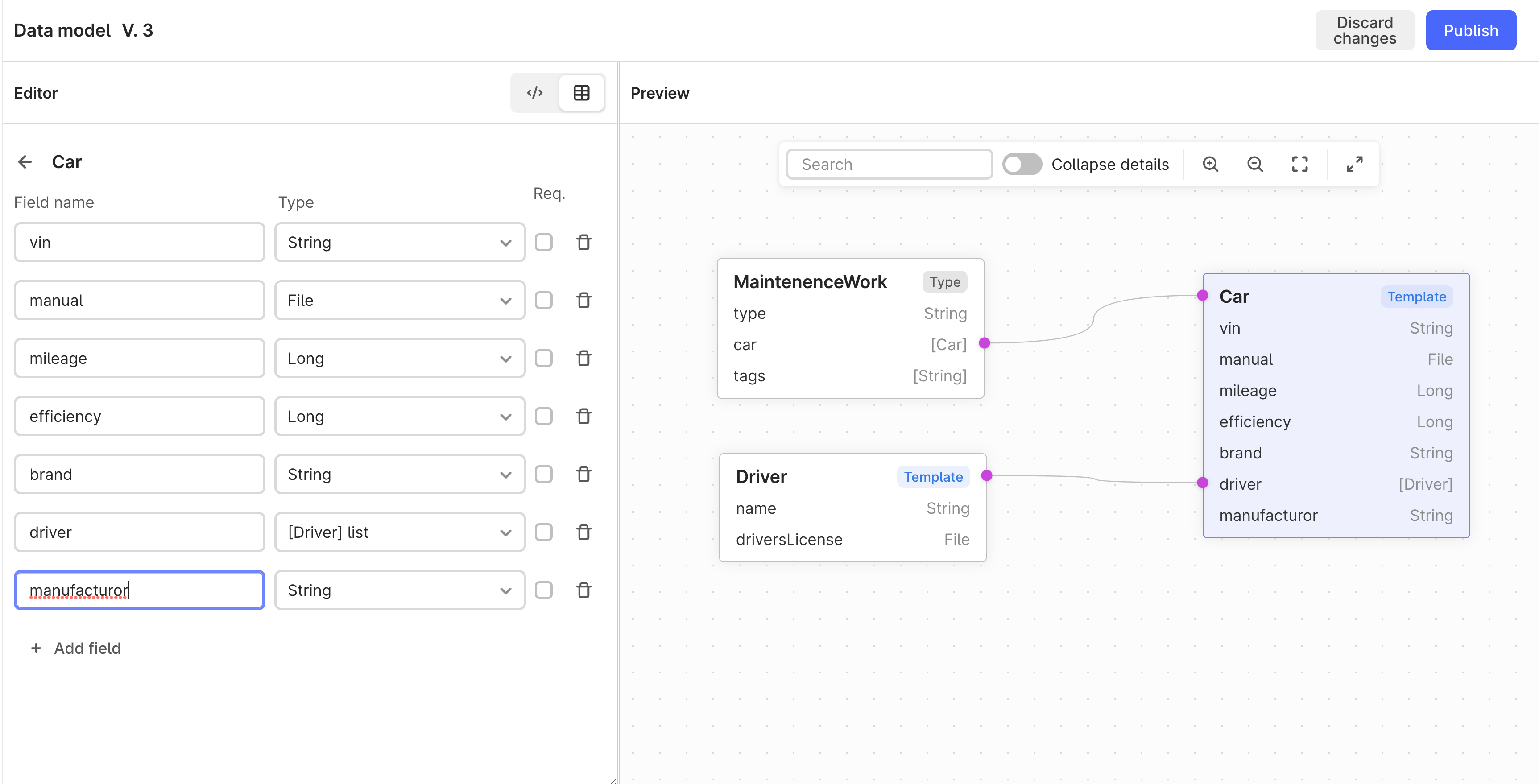Hello! We have worked on a new prototype experience with Templates.

Data model editor
We have heard feedback on the current editor UI and the lack of parity with the actual possibilities of the Data Modeling via Code. For example, there is no ability to add List, references to other custom declared types. This is all resolved via the new data model UI prototype.
Data Model Visualization
Another common request is to visualize the data model as a "graph" or "relationships". We have created a new visualizer to show the data model as nodes with relationships to other types. Note this does not show the data within the data model (yet) and we would love to hear if you would like this feature.
Here is a Loom video to the prototype showing both features.
What's next?
We would love to hear if you would like to try out these features, given enough requests we may add this back to the Templates UI. Alternatively, we can also grant you access to a test CDF project you can use to try these features.
So please let us know if this is useful to you by commenting below. Feel free to share any feedback as well!


 Check the
documentation
Check the
documentation Ask the
Community
Ask the
Community Take a look
at
Academy
Take a look
at
Academy Cognite
Status
Page
Cognite
Status
Page Contact
Cognite Support
Contact
Cognite Support


